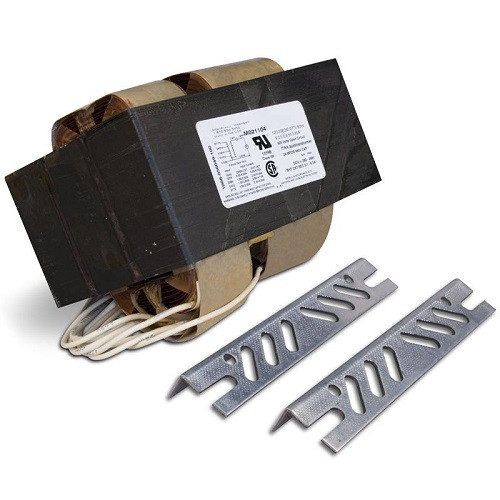Metal Halide Ballasts
Shop Top Brands for Metal Halide Ballasts: Osram, Sylvania, Universal Lighting Technologies, GE Current, and Philips Advance
Additional Useful Information:
-
Understanding the Purpose of a Metal Halide Ballast:
- Metal halide lamps require a ballast to regulate the electrical current and provide the necessary voltage to start and operate the lamp.
- The ballast ensures the lamp receives the correct amount of power for optimal performance, lamp longevity, and safety.
-
Reasons for Needing a Metal Halide Ballast:
- Starting Assistance: Metal halide lamps require a high voltage to initiate the arc inside the lamp. The ballast provides the initial surge of electricity to start the lamp.
- Current Regulation: Metal halide lamps require a specific current flow to operate efficiently. The ballast controls and stabilizes the current, preventing fluctuations and potential damage to the lamp.
- Power Factor Correction: Ballasts improve the power factor, which is the ratio of real power to apparent power, resulting in more efficient energy usage.
-
Signs of a Faulty Metal Halide Ballast:
- Dim or Flickering Light: If the metal halide lamp is not reaching its full brightness or flickering intermittently, it could be due to a faulty ballast.
- Inconsistent Starting: If the lamp has difficulty starting or requires multiple attempts to ignite, it may indicate a malfunctioning ballast.
- Ballast Overheating: Excessive heat emitting from the ballast can be a sign of malfunction. Ballasts should remain cool during operation; overheating can lead to premature failure.
- Audible Humming or Buzzing: Unusual sounds coming from the ballast can indicate internal issues.
-
Steps to Diagnose a Bad Metal Halide Ballast:
- Check the Lamp: Start by examining the lamp to ensure it is intact, properly seated, and not burned out. A faulty lamp can mimic ballast-related issues.
- Inspect Wiring Connections: Verify that the wiring connections between the ballast, lamp, and power source are secure and not loose or damaged.
- Test with a Multimeter: Use a multimeter to measure voltage output from the ballast. Compare the reading to the manufacturer's specifications. Any significant deviation may indicate a faulty ballast.
- Professional Inspection: If you are unsure or unable to diagnose the issue, it is recommended to consult a qualified electrician or lighting technician to inspect and test the ballast.
-
Replacing a Faulty Metal Halide Ballast:
- If the ballast is confirmed to be faulty, it is necessary to replace it with a compatible ballast designed for the specific lamp and fixture.
- Ensure to follow safety guidelines and turn off the power before replacing the ballast.
- Refer to the manufacturer's instructions or consult a professional if you are uncertain about the installation process.

